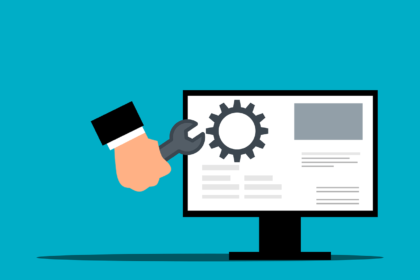Every day, thousands of new mobile applications are released in the App Store, while some businesses are looking for ways to create apps in a short period and on a low budget.
Flutter gives the client complete control over the native characteristics. Such characteristics make Flutter one of the most promising development technologies among iOS developers, and many iOS development companies rely entirely on this new gadget for cross-platform app development. Because Flutter relies on the mobile operating software system for numerous features and setups, your iOS awareness and skill are incredibly beneficial while creating with Flutter. A flutter is an excellent tool for creating mobile user interfaces. It does, however, provide a plugin mechanism for communicating with iOS for non-UI functions. If you’re already an expert in iOS development, you don’t need to relearn everything to use Flutter.
When executed on iOS, Flutter creates several reconstructions within the framework. This post concentrates primarily on Flutter technology’s limitless help and why this development approach is considered because it is the ideal choice for iOS app development. Companies that want to construct robust applications can use this cutting-edge technology for rapid mobile app development.
Flutter is undeniably superior to the native iOS development tools. The official documentation includes guidelines for Flutter for iOS developers. As a result, this article shows how native iOS development concepts prepare for Flutter. Since the Flutter apps were removed from the App Store, there was no way to tell which apps were created with Flutter.
Reasons to Settle on Flutter:
Community and Support
In the year and a half since February 2019, the number of GitHub stars has risen from 64,000 to 93,000. This particular improvement demonstrates the developer community’s enthusiasm for Flutter.
The community has grown significantly, and many developers are contributing to and improving the framework.
Core elements
Widgets are the central feature of Flutter, as they are in other programming languages. Widgets enable developers to view what they’re doing with their code in real time, saving time on building fundamental UI elements for each screen and resolution.
Although Flutter has its own widget toolkit, all components are rendered natively. This provides apps a more native feel while also accelerating their performance.
Technical Architecture
The tech stack used for the native iOS development and Flutter are poles apart.
Flutter is being developed openly by Google and native iOS development tools are being developed confidentially by Apple. Swift is the only exception and another information center available on Apple’s Github. Flutter uses Dart as a programming language whereas either Objective-C or Swift are used by native iOS development.
The IDEs are also different in various ways. Native development is often done in the Xcode whereas the Flutter apps can be built with IntelliJ Idea, Android Studio, or any other text editors like Sublime Text or Atom. As it is well known, that the native apps developed using Swift are as slick and swift as all the other components which are developed natively. Flutter makes use of the Dart framework and often doesn’t require the traverse to speak with the native modules. The architecture of the Flutter engine is elaborated well in Github Wiki.
In short, Flutter has everything needed for native app development within the Flutter engine itself.
Productivity of Developers
While building the apps natively, iOS developers have to use the Xcode and native frameworks provided by Apple. Every time the developers make any kind of changes to the app, a developer has to rebuild the app or third-party dependencies in some cases to see certain changes in the simulator or the devices. As an iOS developer, you might have experienced this slow process too.
Flutter has an option of hit reload, where if a developer makes any changes, instantly the changes would appear in the simulator or devices. However, as the app grows in size developers have to adopt new techniques to use this feature effectively.
The dependency management for iOS still relies on third-party tools like CocoaPods or Carthage which has its own pros and cons. IOS developers must study these third-party dependency management tools. Flutter operates its own dependency management system referred to as Pub. The Pub Package manager is inbuilt with the Flutter apps so that it’s simpler to induce the new dependencies as needed for the development.
Another important note is that Dart is not a common programming language and there is an absence of support for it in many IDEs and text editors. It may be a steep learning curve for the developers to learn a whole new language. While Swift is getting mature and grow on the server-side as well, it has auto-completion and other developers-friendly support in Xcode.
Components of UI
The iOS developers spend maximum their time building the UI.
The native framework given by Apple is termed UIKit which has all the event-driven user interfaces with a wide variety of gesture support. The UIKit framework has native support for animation, document, drawing, and printing.
Flutter UI engine is totally different, the applications of flutter run on its rendering engine and its framework. Flutter operates the concept of the Widgets which might be used to generate complex UIs. In short, the Flutter UI is basically a tree of stateless or stateful widgets. There are a lot of widgets within the catalog available to make the complex UI that supports both Material Components for Android and Cupertino for iOS. The Cupertino package can be utilized to build apps that IOS users feel right at home with. This package is built and maintained by the flutter team and its chips with the SDK. So, if you have got flutter on your machine, you’ve got Cupertino, you will see a bunch of other stuff. There are several dozen widgets like Cupertino action sheet, segmented control, and Cupertino apps. There are some definitions to like Cupertino colors. Some things are not used directly but still play an important role like page transition animations. All of these combine to give you the ability to compose interfaces with Flutter that Ios users feel comfortable with that to look and act the way they expect disabled buttons or the proper color pop-ups to appear from the correct direction with the right speed and when the user instinctively swipes to dismiss one, away it goes. And that’s what the Cupertino package is built for.
This document is for iOS developers looking to use their existing iOS knowledge to build mobile apps with Flutter. If you have a deep understanding of the fundamentals of the iOS framework then you can operate this document as a way to start learning Flutter development.
The layouts and widgets of the flutter are pixel perfect as well.
Support for Testing
XCTest native testing framework for the unit is given by flutter with an aim of integration, performance, and UI testing of iOS Apps. Apple is continuously enhancing its testing frameworks and tools with each passing year. The XCTest is proving to be a good framework for testing native iOS apps with Swift.
However, the native XCTest framework lacks data-driven testing. One of the loss bearing factors of using XCTest is stubbing and mocking especially with Swift. The mocking with protocols requires plenty of code and there’s no native support for stubbing.
On the other hand, Flutter provides a solid testing framework that enables the developers to write tests at the unit, functional, and UI level. Widget testing is one of the coolest features that Flutter provides to run UI tests as fast as unit tests. Flutter has cool documentation on which talks about the testing of Flutter apps at different levels along with example code. Flutter integration tests are similar to Xcode UI tests that undergo the UI to perform specific operations. The Flutter integration tests run in a different process and can be run on real devices or on simulators or emulators. Flutter provides a separate package, Flutter Driver to drive these tests.
Flutter is clearly changing the views of cross-platform mobile app development due to the benefit of development, test, and release of mobile apps.
Conclusion
We have done a brief comparison of the native apps and Flutter apps. Flutter is still a new and long way to go but we have seen that it’s growing faster.
Cross-platform development is expected to reach the height in the coming years. Some experts already predicted that Flutter will be the future of mobile app development. Whether to pay attention to Flutter or not is a personal choice but it’s safe to say that Flutter has entered the cross-platform app development race so strongly and it’s here to remain for the long term in the future.




